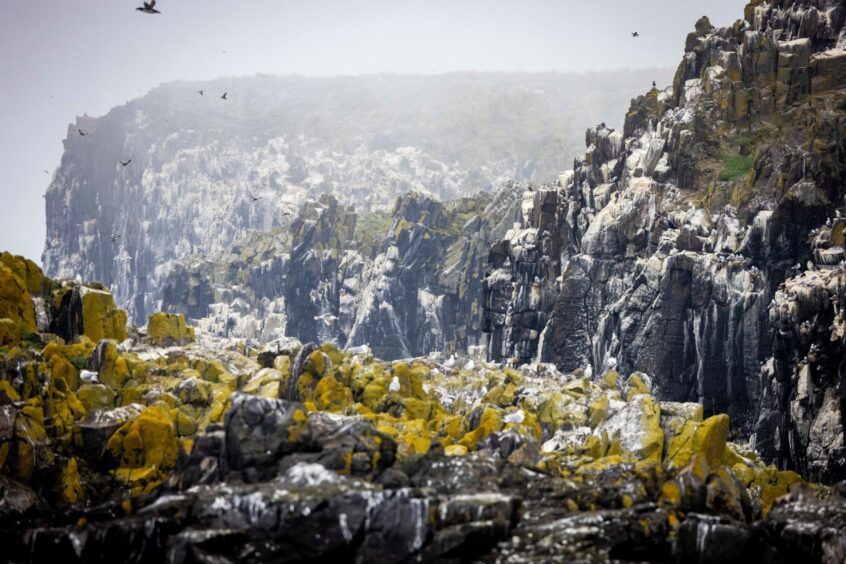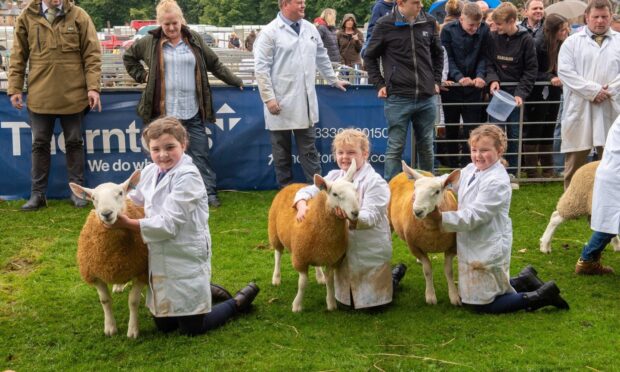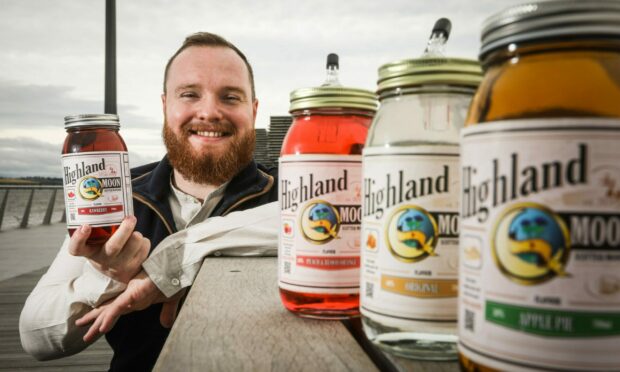The seabirds that soar and swoop above the Isle of May are about to receive an added layer of protection.
Earlier this month, a ban on on sandeel fishing was proposed by the Scottish Government and, after passing through Holyrood, it will most likely be introduced in spring.
This will benefit the thousands of birds, marine mammals and other fish found on the island.
The RSPB has estimated that 70% of Scottish seabird species are in decline. That includes the iconic puffins and kittiwakes that help bring thousands of tourists to the area every year.
Charity workers say the birds are “red-listed as birds of highest conservation concern” and, therefore have welcomed the sandeel fishing ban.
But not everyone is happy.
Members of the local fishing industry – who have previously spoken out over non-UK boats taking the fish – have branded it a “political decision” driven by pressure from conservation groups.
Sandeel fishing ban will help ‘build resilience’
Staff at Scottish Government agency Nature Scot argue the ban will also provide protection for the fish and other larger maritime species that feed off sandeels.
According to marine sustainability manager, Dr David Donnon, the “prohibition will help build the resilience of the marine environment”.
“We face challenges like climate change and with the avian flu affecting sea bird populations,” he says.
“This is a step that helps build resilience into the system to help ride out these changes which are coming along.”
A UK Government ban will start on March 26. Meanwhile, the Scottish Government has explained that its ban would start at the same time, if approved.
No UK vessels have been assigned a quota for sandeel fishing since 2021. That means the practice has been carried out exclusively by European boats, provoking local anger.
What are sandeel fish and why do they matter?
The small silver fish is packed with nutrients, providing a key food supply for seabirds, marine mammals and other fish.
They are a key part of the diets of whitefish species, including cod, whiting and haddock.
Larger seals and harbour porpoises also rely on them as a food source.
“There are some seabirds that feed directly on sand eels and the kittiwake is one in particular”, says Dr Donnon.
“It’s reproductive success has been linked to the abundance of sandeels”, says Dr Donnon.
“The sandeel are an important prey species for fish, seabirds and marine mammals like seals, dolphins and porpoises.
“Some of those that feed on it directly will obviously benefit, but other species will benefit indirectly from it.”
Sandeels are planktonic creatures that share a resemblance with a small eel and can grow up to 30cm in length. They hibernate in the winter by burying themselves in the sand, before emerging again in the spring.
Compensation for affected business
Fishing boats are abundant in the harbours of Anstruther, Crail and Pittenweem when I visit on a grey wet Wednesday.
Through the poor visibility I can just about make out the shape of the Isle of May.
It lies around halfway between the Fife and the East Lothian coasts and is hard to make out in the mid morning haar.
The wet weather means most visitors to Anstruther are packed into indoor venues.
But in less than six weeks time sightseerers will be able to board a small boat from here to the Isle of May to see the impressive bird populations for themselves.
Westminster previously closed this area off Scotland’s east coast to sandeel fishing in 2000, but only for UK vessels.
EU vessels from countries, such as Denmark and Sweden, had been allowed to continue seeking out sandeel catches.
The proposed ban will be implemented in all Scottish waters and should put a stop to the practice in the waters off the East Neuk of Fife’s coastline.
In 2021, a Pittenweem-based fisherman raised concerns about the attention to Swedish and Danish boats operating in the seas close to the Forth.
At the time, the vessels were described as “hoovering up” the small fish from the area.
The sandeels were then predominantly used on the continent for fishmeal and fish oil for livestock and fish.
Fisherman’s Association hits out at Sandeel ban
The Scottish Pelagic Fisherman’s Association (SPFA) previously expressed its displeasure with the existing arrangement.
And now it has hit out at this proposed ban, claiming it is a “political decision”.
Chief executive of the SPFA, Ian Gatt said: “This has been driven by unrelenting NGO (non-governmental organisation) pressure.
“The reality is that ICES (International Council for the Exploration of the Sea) includes ecosystem considerations in their advice on sandeels.
“That includes taking into account forage feed for birds and other marine species. Their advice has never advocated the permanent closure of sandeel fisheries.
“Regardless, the UK has not issued a sandeel quota to the UK fleet since Brexit, while EU vessels have managed to fish on. At least now we have parity.
“One business in particular is impacted by this decision. To date there has been no discussion on compensation for a policy decision taken by governments north and south of the border.”
A Scottish Fishermen’s Federation spokesman declined to name the business.
Nature Scot: Sandeel ban ‘will benefit’ fishing community
However, Dr Donnon argues there is a “sustainable fishing aspect” to the sandeel fishing ban.
“There is a commercial fish species which eat sand eels – so like cod, whiting and haddock”, he says.
“The prohibition will benefit fishing communities from that perspective as well.
“I can certainly understand that some fishers would be concerned about a ban opposed to other measures”
“We work quite closely with the fishing industry and share a common interest which is that you need a high quality environment to produce high quality seafood.”
Liberal Democrat MSP for North East Fife, Willie Rennie had previously called for a ban to be imposed in the Scottish Parliament.
In 2021 he cited a 50% reduction in kittiwake numbers due to industrial sandeel fishing carried out by EU vessels.
He has welcomed the decision to ban the practice.
“This ban is a long time coming. We need to do everything we can to support sea bird populations in the area especially as they have been in significant decline in recent years”, says Mr Rennie.
“The ban won’t have any economic impact on the local fishing community as the boats that harvest the sandeels are predominantly from the Danish fleet.
“It was a fisherman who first alerted me to the industrial processes that removed large volumes of the sandeels from the mouth of the Forth Estuary.
“I took up the challenge with government and was pleased that they finally agreed to the ban.”
Ban will also tackle damaging fishing practices
The ban also aims to target further restrictions on bottom trawling.
This is a practice that involves towing a net to capture creatures living near seabed.
It is thought that banning this will help protect pink sea fans, sponges and anemones.
The Scottish Government’s rural affairs secretary Mairi Gougeon said:
“Sandeel are a vital part of our marine ecosystem and a critical component of the food chain in the North Atlantic.
“It is critical that we manage our marine environment in a such a way as to ensure its sustainable use
“Prohibiting all vessels from fishing for sandeel in Scottish waters will help provide long term sustainability and benefits not just for sandeel.
“But also for seabirds, marine mammals and other fish species.
“This decision reflects overwhelming support for our proposals, the scientific evidence base and our longstanding position not to support fishing for sandeel.”














Conversation